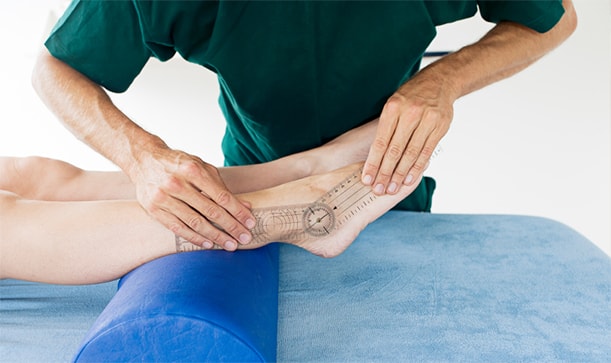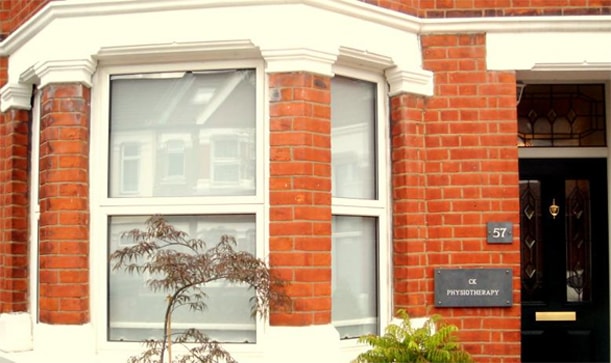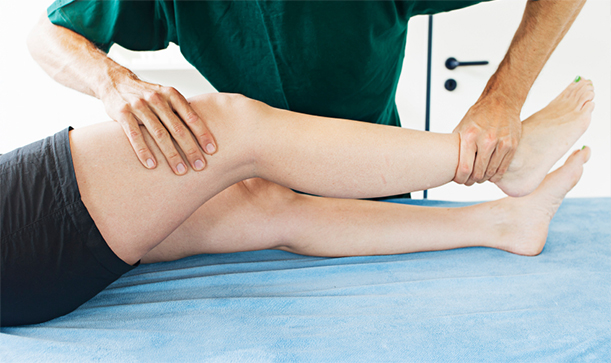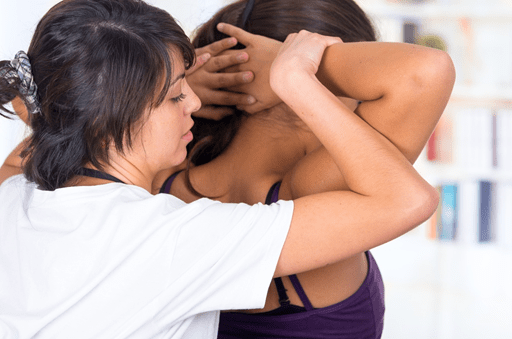CK Physiotherapy
AREAS COVERED
W7, W5, W13, Ealing, West London
57 Elthorne Avenue
Hanwell, W7 2JY
T: 020 8566 4113
M: 079 572 46185
E: info@ckphysio.co.uk
Location / Parking
We are situated in Hanwell, between Boston Manor Road and Northfields Avenue, south of the Uxbridge Road.57 Elthorne Avenue
Hanwell, W7 2JY
There are parking restrictions Mon - Fri 9-10am and 2-3pm. If you need a permit during this time please inform your therapist when you arrive. There are no parking restrictions at other times.
Opening Times
Please phone the number above during working hours to make an appointment. Our reception service will be happy to book your session.
London Underground / Bus Services
London Underground
10 min. walk from Boston Manor Tube Station.
15 min. walk from Northfields Tube Station.
Bus Service
E8, E3, E2, 207, 607, 83
Request Call Back
Our Blog
The Role of a Physiotherapist in Facial Paralysis Treatment
By: BryanKelly (Psst, View author in Google Plus) Date: Mar 28th, 2019Overcoming the effects of facial paralysis can present a long, difficult path-- but a physiotherapist can help. He or she will work with you to create a customised physical therapy plan tailored to meet your needs. This plan will be built around your prognosis and the severity of your condition; programs like these can only work when they're tailored to meet a patient's specific needs, and that's exactly what a professional physiotherapist will do.
There are several physical therapy techniques that may help combat the effects of facial paralysis. Your physiotherapist may suggest:
Neuromuscular retraining (NMR)
• Utilises subtle exercises with the goal of retraining the brain to coordinate facial muscles
• Enables a patient's brain to reconnect to facial muscles and their corresponding movements
• Teaches patients to isolate facial muscles
Manual massage
• Involves a variety of massage techniques
• Helps decrease facial muscle tightness
• Improves flexibility and range of motion of facial muscles
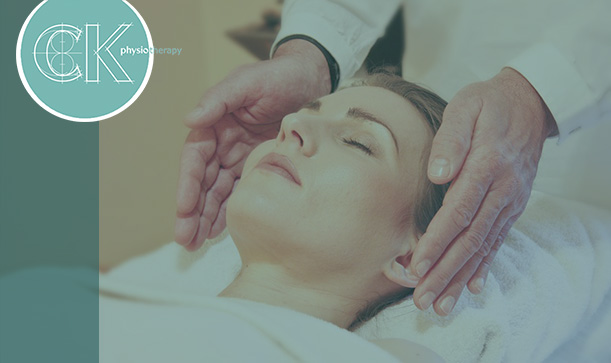
The Anatomy of the Face
Facial Bones
Bones, regardless of where they're located, tend to follow the same rules of composition. They're made up of one-third organic matter and two-thirds mineral matter; throughout the entire human body, bones actually account for 14 to 20 percent of body weight!
The human body has fourteen facial bones plus one mobile lower jawbone (known as the mandible). These bones help create a structural foundation for the face; they also serve as origination points for facial muscles. This is where muscles attach to bone for support and what allows them to cause jaw and facial movement.
Outside of instances involving injury or surgery, the skeletal structure of a human's face remains constant throughout an individual's life. Generally speaking, ageing will produce some minimal effects on the height and length of some facial bones-- but outside of that, things are set in stone.
The fourteen bones within the human face are:
The mandible
• The largest bone in the facial skeleton
• Forms the lower jaw
Two maxillae
• Form the upper jaw
Two zygomatic bones
• Also known as malar bones
• Form the cheekbones and bottoms of eye sockets
Two lacrimal bones
• Smallest and most delicate bones in the face
• Form the bottom, inner wall of the eye sockets
Two palatine bones
• Form the roof of the mouth
The vomer
• Forms the lower section of the nasal septum
The inferior nasal conchae
• Spongy bones which help divide the nasal cavity
Facial Muscles
Facial muscles (also known as mimetic muscles) lay just beneath the skin, meaning that they're considered subcutaneous. They're responsible for controlling facial expression and for helping humans do things like eat, blink, etc. They originate from attachment points to the facial bones.
Facial muscles tend to be broken down into three broad categories: muscles of the scalp, muscles of the eyes and nose, and muscles of the mouth. They are named for their related facial bones, which makes understanding and recalling them a little easier than it may otherwise be. The integrity of an individual's facial muscles will typically degrade with age.
There are more muscles in the human face than bones-- a list would be nearing excessive. A few critical points to remember about facial muscles include:
• The muscles of the mouth are the most abundant on the face.
• There are fifteen muscles of the mouth.
• Many serve to pull the mouth upwards, downwards, or outwards.
• Others are used for things like blowing, whistling and chewing.
• Other muscles can help lift eyelids, draw eyebrows apart and together, and draw the scalp forward and back.
How Facial Paralysis Occurs
Facial paralysis can occur for a number of reasons, but two stand out amongst the crowd as more common or severe issues: Bell's palsy and strokes.
Bell’s Palsy Paralysis
Bell's palsy is the most common cause of facial paralysis according to America's National Institute of Neurological Disorders and Stroke. The condition causes an inflammation of the facial nerve, which tends to cause the facial muscles on one side of the face to droop.
Strokes
In some cases, a stroke can also be a root cause of facial paralysis. This causes damage to the nerves in the brain that control facial muscles. When this occurs, facial paralysis follows.
There are other potential causes of facial paralysis as well, including:
• Injuries to the face
• Skull fractures
• Head or neck tumours
• Lyme disease
• Middle ear infections (Other ear damage)
• Certain autoimmune diseases (Multiple sclerosis and Guillain-Barre syndrome)
• Ramsay-Hunt Syndrome
Symptoms
The symptoms of facial paralysis are somewhat fluid-- they're often times dependent on what exactly caused the paralysis in the first place.
Sufferers of Bell's palsy will typically experience facial paralysis on only one side of the face. This affected half of the face may be impacted by a lack of blinking control, decreased tearing in the eye, and drooping of the mouth. Other, less straightforward symptoms may include:
• Pain in or behind the ear
• An altered sense of taste
• Slurred speech
• Sound hypersensitivity (on the affected side)
Individuals who have experienced a stroke generally deal with additional symptoms not seen in those with Bell's palsy. The following symptoms should be watched for carefully in addition to the symptoms mentioned above:
• Shifts in the level of consciousness
• Seizure
• Confusion
• Weakness in arms or legs
Treating Facial Paralysis
Treatment for facial paralysis, much like symptoms, will vary based on the cause of the problem.
Those with Bell's palsy oftentimes recover and regain the ability to move their faces on their own. In some cases, taking antiviral medications or oral steroids immediately may help elevate the chances of a full recovery. Some individuals seek out physical therapy to help strengthen their facial muscles.
When facial paralysis is caused by a stroke, it tends to be treated in much the same way as a stroke in general. Those who've experienced recent strokes may be eligible for special therapies designed to eradicate the clot that caused the stroke. Medication typically becomes necessary further from the incident the problem is addressed.
How Physiotherapists Help in the Facial Paralysis Treatment
Consulting a physio expert when seeking treatment for facial paralysis can mean the difference between a full recovery and a lifelong battle with medical issues. If you or a loved one has experienced facial paralysis and are seeking treatment, contact us today. Our friendly, knowledgeable team will be glad to speak with you about your concerns and get you scheduled for a consultation.
Supplemental Reading: Physiotherapy and the Treatments We Provide

